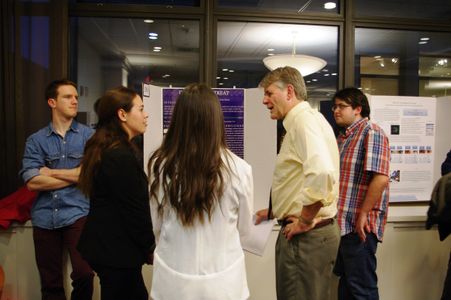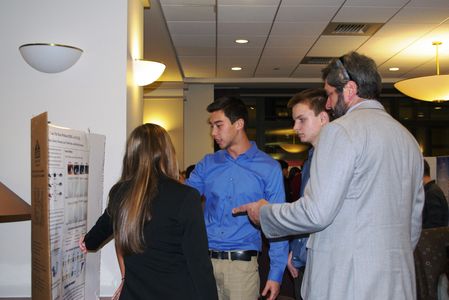Personal Genome Project Asks Sophomores to Closely Examine Their Genetics
Eye color. Muscle performance. Height. We make note of these traits daily, yet don’t think about the underlying genes from which they stem. Unless of course, you’re a CGS sophomore taking biology with either Professor Andy Andres, Millard Baublitz or Peter Busher.

Andres, Baublitz, and Busher, who all teach sophomore biology sections, collaborate during the genetics portion of the course. The professors created a project termed the “Personal Human Genome Project,” which is inspired by the Human Genome Project and pushes students to apply their understanding of the course material by exploring their own genetics. Andres, Baublitz, and Busher ask students to select an observable genetic trait and work in groups to explore the genetic variations among team members. Students take samples of their own cells, isolate their DNA, and amplify it using polymerase chain reaction (PCR) here at CGS. Their amplified DNA is then sent to a lab to be sequenced, which allows students to visualize the nucleotide sequence for their specific polymorphisms. Genetic traits studied include muscle performance (e.g., short, powerful bursts vs. endurance, resting heart rate), pigment genes (e.g., eye color), height genes, genes that influence one’s ability to taste bitter substances, and the gene that influences if people can smell the asparagus metabolite in urine.

Students from both sections came together last week to share the results. The charge in the room was palpable– students were exchanging findings and eagerly awaiting their chance to discuss it with the professors. “We have students create a scientific poster, which brings a creative aspect to the project. It also is a model of how scientists actually communicate their work to research colleagues at professional meetings,” shares Andres. “I’m really thankful they didn’t just turn in a report. Students were excited to present in this conversational format, and to see their classmates’ work.”
CGS sophomore Brigitte Dardashty recounts her experience: “Our group focused on the gene ACTN3, which deals with muscle performance. Based on each person’s individual SNP (Single Nucleotide Polymorphism), we identified our individual athletic abilities. I found that my SNP was homozygous CC, which means that I am a power athlete (TT codes for an endurance athlete). It now makes sense that I succeeded in the sports I played growing up- soccer, basketball, volleyball, track (sprinting), and dance- as all require bursts of energy. This was a great way to incorporate science into our own personal lives.”

Staying true to CGS’s collaborative ethos, Professors Busher and Andres have teamed up for five years now on the project. “We have a lot of non-science majors in the class, and it’s really rewarding to see those students especially become excited about the course material. The research aspect provides a hands-on experience, and working with their own DNA makes it personally relevant,” explains Busher.
“I enjoyed the Genome Project a lot,” shares CGS sophomore Dan Stone. “It gave me the opportunity to work with my own DNA, which I had never done before. It was particularly awesome because it made our findings unique to me, personally. Through my research, I learned just how immensely important our genes are. It’s crazy to think that from the moment I was born, my future phenotypic expressions or the way I appear physically was already predetermined in part by my genes.”
Given the success to-date, rising and future CGS sophomores can be assured that they’ll have the same chance to explore human genetics in a rewarding, personalized way.